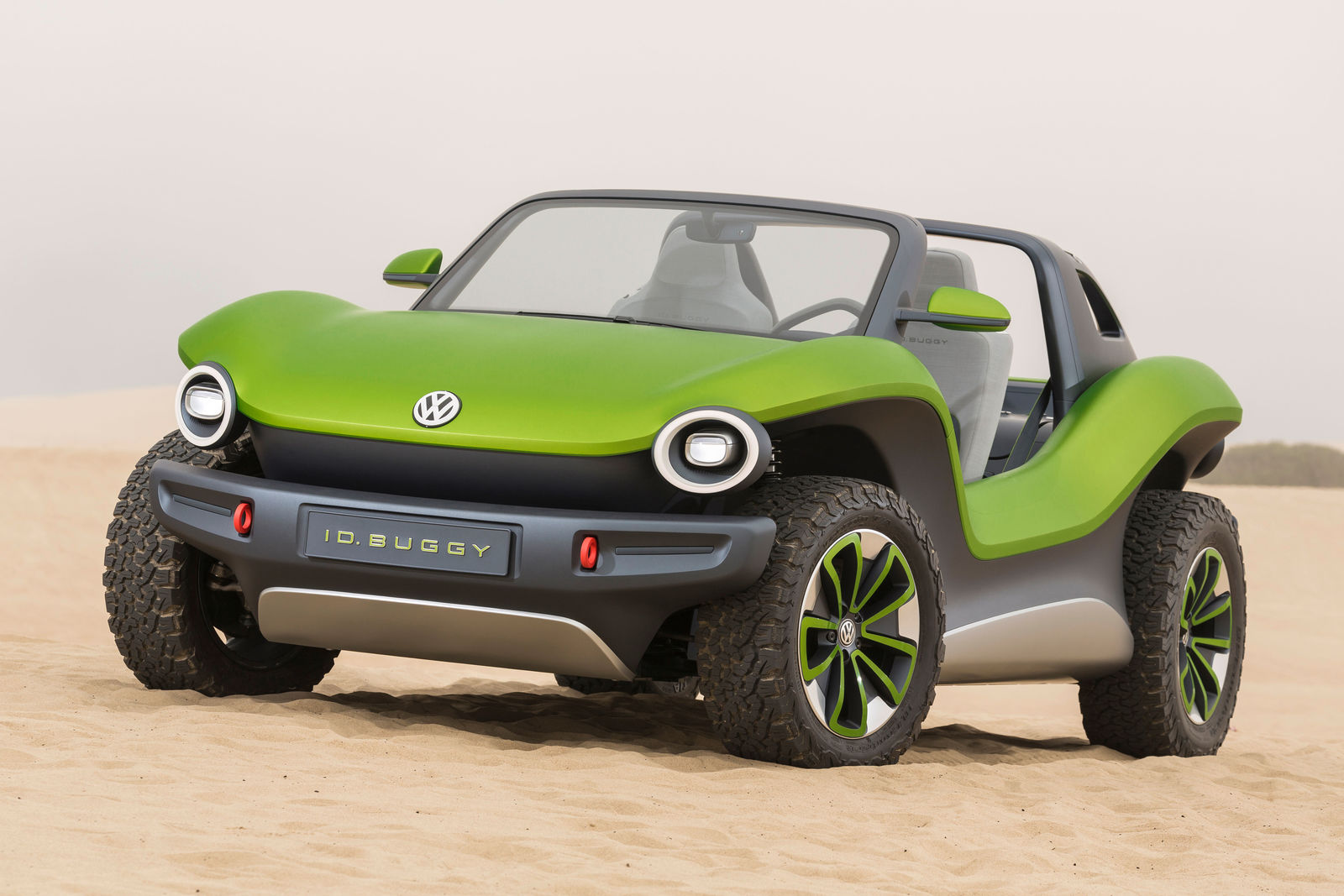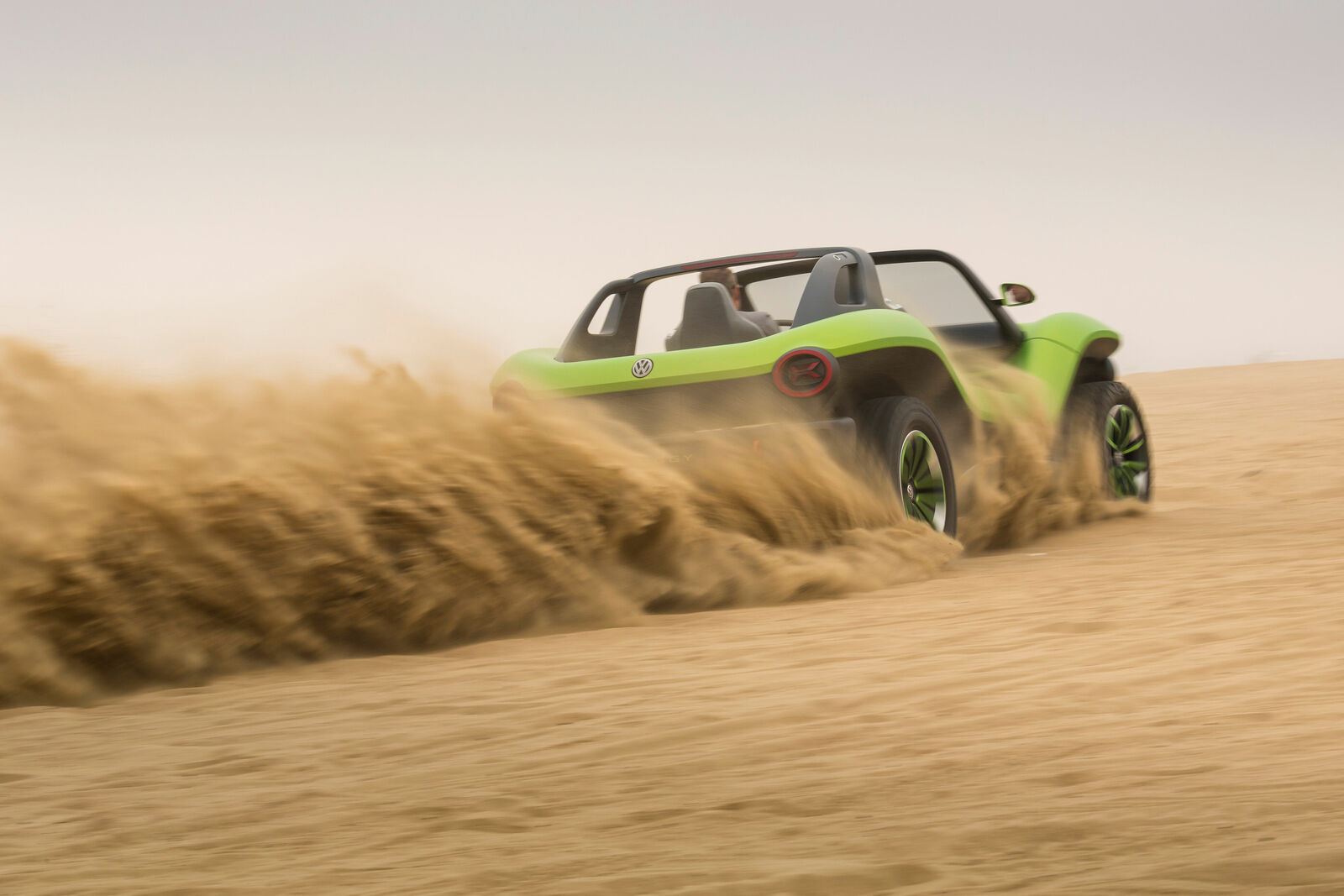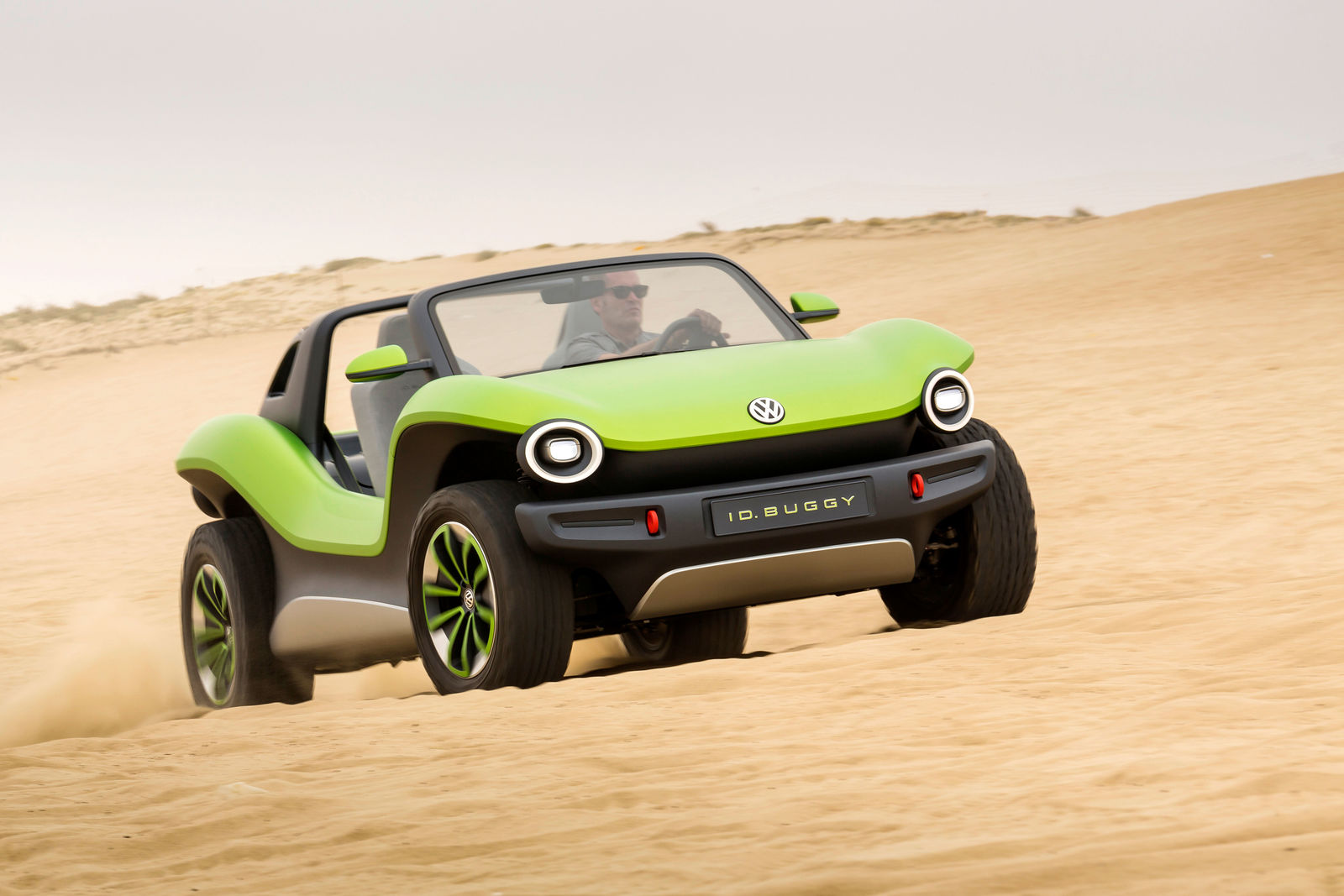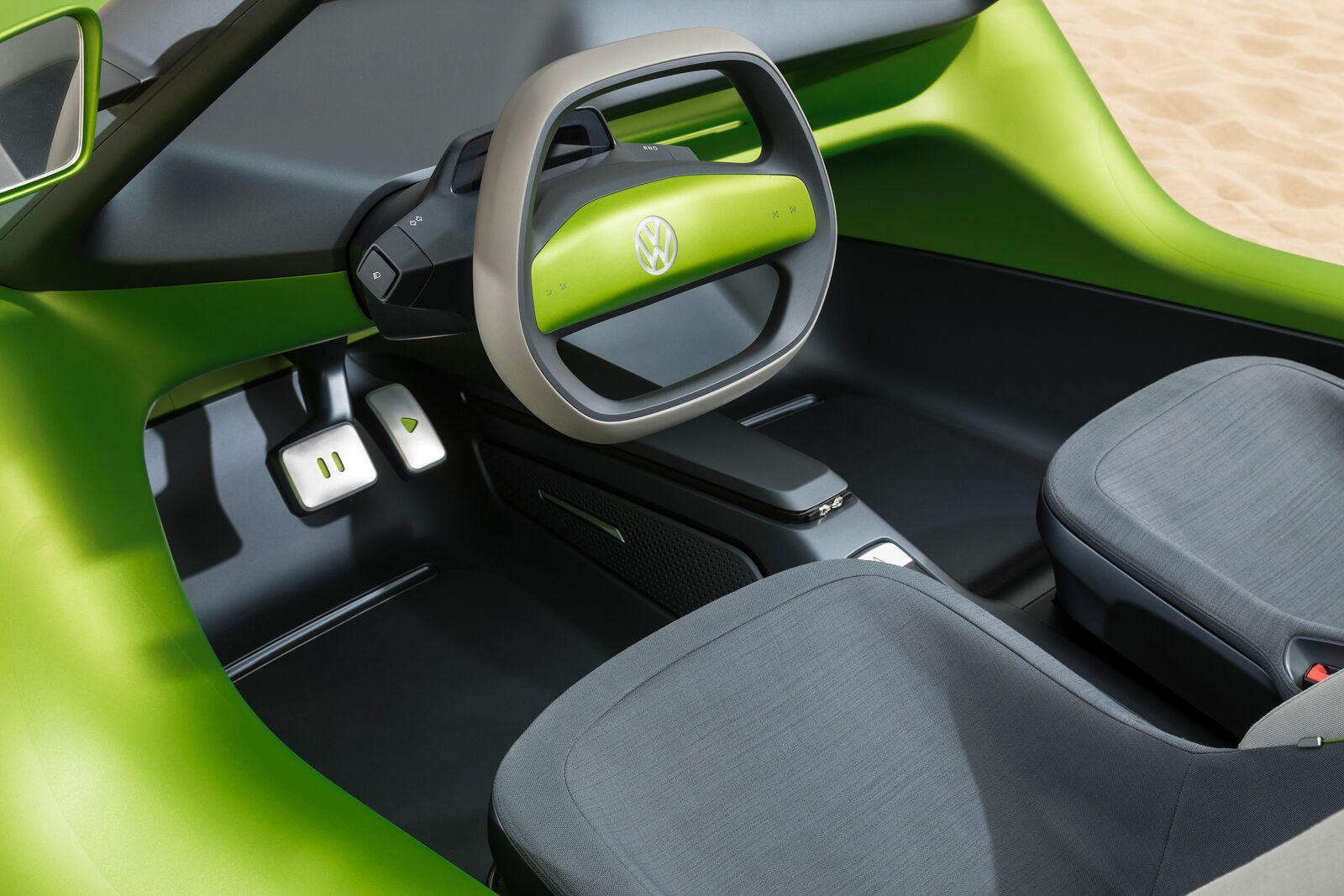- Concept car takes the idea of the legendary dune buggies into the age of electric mobility with a 62 kWh battery and 150 kW / 204 horsepower
- Next-generation design is off-road ready and features no roof or doors for the purest beach cruiser experience
- ID. BUGGY shows the MEB platform can be used by start-ups for a wide variety of custom vehicles
For the first time the Volkswagen ID. BUGGY hits the roads and beaches of California. The concept car will also be shown at the Pebble Beach Concours d’Elegance during Monterey Car Week. Since its world debut at the Geneva International Motor Show in March, the ID. BUGGY has created buzz about the future possibilities of e-mobility.
Drawing inspiration from the classic dune buggies of the 60s, the ID. BUGGY shows the versatility of the modular electric drive matrix (MEB) and puts the fun in functional. The BUGGY’s modular design allows for the composite upper body to be detached from the MEB chassis, opening up a world of possibilities for third-party manufacturers, as the original Meyers Manx kit did for the first buggies.
The lack of doors and a roof make the ID. BUGGY ready for the purest form of classic beach cruising. Off-road features include standard 18-inch wheels and BFGoodrich All-Terrain T/A® off-road tires (255/55 at front and 285/60 at rear), as well as solid aluminum underbody protection. Two robust red steel eyelets are integrated in the bumpers for towing and the reinforced windshield frame and the Targa bar provide rollover support.
Inside, the ID. BUGGY features a minimalist aesthetic and waterproof materials. A hexagonal steering wheel, covered with water-repellent Nappa leather, features touch controls, and a digital instrument cluster keeps the dash uncluttered. Despite the shortened wheelbase of the concept car, passengers have an unusually large amount of space.
The zero-emissions drivetrain of the I.D. BUGGY is made up of the electric motor integrated in the rear axle, with power electronics, a single-speed gearbox, and the high-voltage flat battery (62 kWh) arranged in the car floor to save space. The electric motor delivers 150 kW / 204 horsepower and maximum torque of 310 Nm from standstill, and gives the vehicle an expected range of 250 on the WLTP cycle. The concept car sprints from zero to 100 km/h in just 7.2 seconds. The maximum speed is electronically controlled at 160 km/h.
Media
Media contacts

Tel. +49 (0) 5361 / 9-77639




